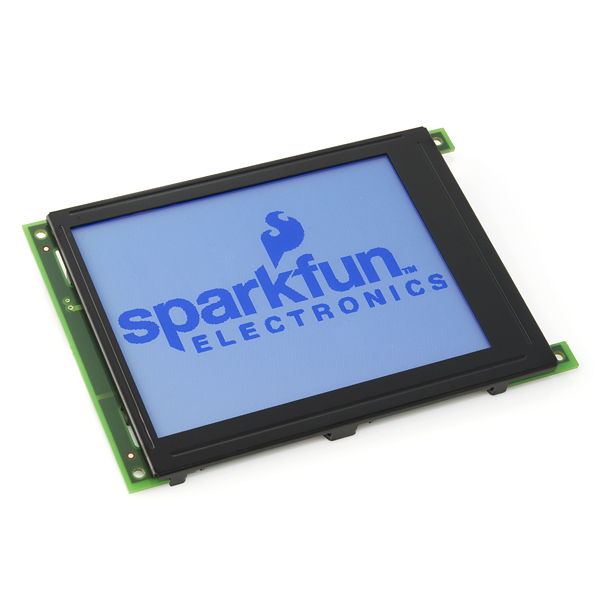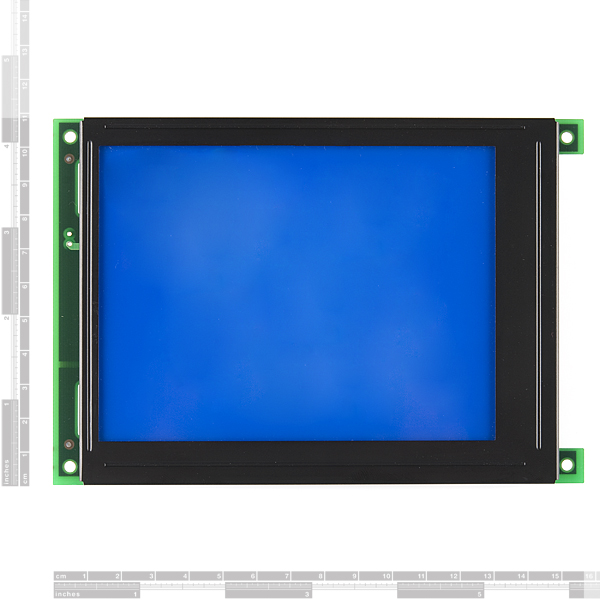Kent Display - 320x240x5.7
Replacement: None. We do not have a direct replacement for this LCD. This page is for reference only.
This is a 320x240 reflective cholesteric liquid crystal display (ChLCD) from Kent Displays. The most distinguishing feature of a ChLCD is its ability to retain its image even when the LCD is not powered, similar to e-ink technology. This makes the LCD a great fit for portable battery-powered projects. Bistable, sunlight readable, and easy to integrate, this 320x240 (1/4 VGA) is truly a unique LCD display solution.
Integrated into the display is an embedded controller which generates the unique ChLCD drive waveforms and provides automatic temperature compensation. Communication with the controller is achieved through an SPI-compatible interface, which means a minimal number of I/O resources are needed to control the display.
We now have a breakout board compatible with this display's connector here.
These screens may show traces of pressure points from handling. Don't worry, it's not broken. This can be easily corrected with an electronic erase. The datasheet discusses how to do this on page 8, under section 4.4 Electronic Erase (Pressure Point Removal)
- “No Power” Image Retention
- Serial Peripheral Interface (SPI) Compatible
- 3.3V Logic Supply
- 4.0V – 9.0V Power Supply
- 320 Columns × 240 Rows
- 72 dpi (pixels per inch)
- Integrated LCD Bias Supply
- 250 kbps Image Download
- 32 KB of Image Memory
- 10 μA Sleep Current
- Full or Partial Screen Update Ability
- 155 x 107.9 x 14 mm
Comments
Looking for answers to technical questions?
We welcome your comments and suggestions below. However, if you are looking for solutions to technical questions please see our Technical Assistance page.
Customer Reviews
No reviews yet.




Kent Displays’ ChLCD products have a 360-degree viewing cone.
Can you tell me what's Max. and Min. contrast ratio at datasheets' page10 "Contrast Ratio Polar Representation" graphic?
How does this display compare to buying a kindle and pulling out the display....since Kindles are a tad cheaper.
I made an Arduino Library for this. It does SPI in Software so it wouldn't interfere with the Ethernet Shield (for example).
http://dl.dropbox.com/u/168982/KentDisplay%20Software%20SPI.zip
I've created sample code to run the smaller size of this display, but I have included comments on how to change the settings for this larger size. The code and instructions can be found here: http://www.rustynailworkshop.com/Projects/Entries/2010/8/9_Arduino_Powered_Kent_Display.html
http://harleyhacking.blogspot.com/2010/05/new-kent-display.html
Pros: High resolution, large, high contrast, sunlight readable.
Cons: Pricey, SLOW to update (2 secs), 250kHz isn't fast to transfer, not very flexible command set. The edge pixels are the boarder (so if you set the upper left corner square pixel, the pixels above and to the left are also set, so it is really 318x238).
You can update part of the screen, but it isn't like you can do it to a rectangular area.